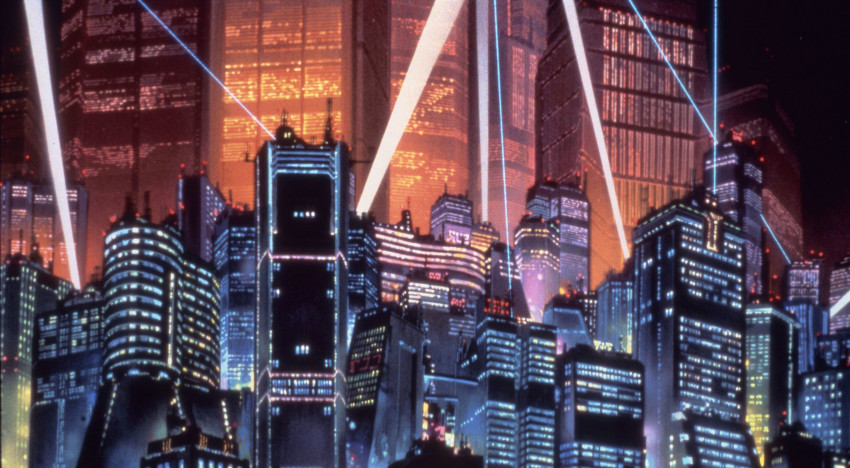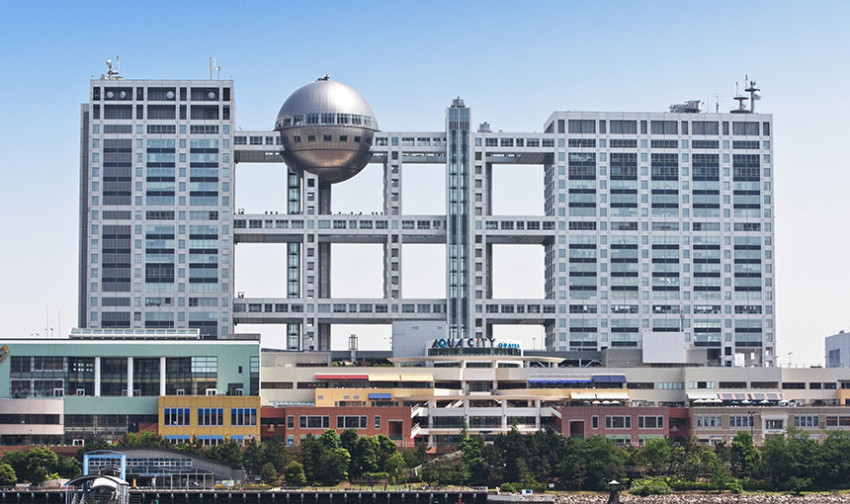Books: The Metabolist Imagination
May 4, 2020 · 0 comments
By Jonathan Clements.
 In his new book on visions of Japanese cities, William O. Gardner explores the “ruins of the future”, in particular the ideas of the Metabolists, a group of Japanese architects obsessed with the integration of cities with the human being – the creation of new metropolises on reclaimed land, and urban design for the shape of things to come. But as revealed in his full title, The Metabolist Imagination: Visions of the City in Postwar Japanese Architecture and Science Fiction, Gardner investigates their work not only in terms of the changes it brought to Japan, but to Japanese pop culture, in the utopias and apocalypses of sci-fi.
In his new book on visions of Japanese cities, William O. Gardner explores the “ruins of the future”, in particular the ideas of the Metabolists, a group of Japanese architects obsessed with the integration of cities with the human being – the creation of new metropolises on reclaimed land, and urban design for the shape of things to come. But as revealed in his full title, The Metabolist Imagination: Visions of the City in Postwar Japanese Architecture and Science Fiction, Gardner investigates their work not only in terms of the changes it brought to Japan, but to Japanese pop culture, in the utopias and apocalypses of sci-fi.
 Gardner has an infectious enthusiasm for a time and a mood – that heady 1960s moment when the “generation of charred ruins” reached the age of majority, and a bunch of young architects tried to seize control of the modernising city. His account of the real-world fad for “Metabolism” spans the long 1960s, from the day in 1959 when Tokyo was revealed as the location for the 1964 Olympics, through the years of demolition and construction to make way for the Games, and the long tail of after-shocks.
Gardner has an infectious enthusiasm for a time and a mood – that heady 1960s moment when the “generation of charred ruins” reached the age of majority, and a bunch of young architects tried to seize control of the modernising city. His account of the real-world fad for “Metabolism” spans the long 1960s, from the day in 1959 when Tokyo was revealed as the location for the 1964 Olympics, through the years of demolition and construction to make way for the Games, and the long tail of after-shocks.
Gardner’s history of futures past marks the crucial dates that transformed the Tokyo skyline. He begins in 1945, of course, with the horrific sweeping away of the old order. He deals with thinkers like Arata Isozaki, who ruefully observed that even a reconstructed Hiroshima was fated to fade into dust, with his words: “future cities are themselves ruins.” His musings, that even the shiny new buildings of post-war reconstruction would rust and decay, contain within them the seeds of much later Japanese sci-fi.
In 1958, the Japanese government removed a rule that kept buildings in central Tokyo capped at a mere 31 metres, opening the way for today’s skyscrapers. In 1963, new residential developments turned distant woodlands into suburbs – an urban transformation that informs multiple references in Studio Ghibli films to what was once the Tama Hills, and is now the Tama New Town.
The Metabolists prepared to make waves further afield, clutching a bunch of contracts to build grand airports and skyscrapers in developing African nations, in Saudi Arabia and Iran, only for many of their schemes to be stalled by the Oil Shocks and the overthrow of the Shah. But their inspiring ideas endured in fictional form, re-emerging in many of the concepts and images of Japanese science fiction, in the 1970s and beyond.
Gardner, for example, finds it “striking” that so many of the mecha shows of the 1970s, starting with Mazinger Z and culminating in the iconic Gundam, should seem to allude so closely to Metabolist ideas of “cyborg architecture” – a machine-based enhancement of human potential that was one of the central ideas of the movement. He points, most obviously, to Katsuhiro Otomo’s Neo-Tokyo in Akira, based on the architect Kenzo Tange’s Plan for Tokyo (1960), which proposed building into and onto Tokyo Bay – an idea subsequently riffed on by Patlabor and Ghost in the Shell.
Having met many Japanese animators, I can confirm they are precisely the sort of people to have stacks of futurist architecture books on their desks as they search for inspiration. It’s all the more persuasive when one realises just how much of the Metabolist spirit endures in the very environment that nurtures modern Japanese popular culture – Fuji TV’s ridiculously space-age Tokyo headquarters (pictured below) was actually designed by Tange, while Odaiba, the former industrial wasteland repurposed as an entertainment district and convention centre, is a recognisable shadow of his plan for Tokyo Bay.
 Gardner’s focus inspires the reader to approach Japanese pop culture with new eyes. I always thought that Aerial City 008 (1969) was nothing more than a naff puppet show, but Gardner reframes it as a “hybrid literary-architectural text,” taking Sakyo Komatsu’s original sci-fi story and breathing life into it with soaring visions of a future like something out of Gerry Anderson. Komatsu’s fiction, fated to soon enjoy an overseas renaissance thanks to the Netflix production of Japan Sinks, comes under particular scrutiny for the way it playfully destroyed everything that the Metabolists were trying to build – Komatsu, for Gardner, is the prophet of those factors that the bright-eyed Metabolists failed to visualise: climate change and environmental disaster.
Gardner’s focus inspires the reader to approach Japanese pop culture with new eyes. I always thought that Aerial City 008 (1969) was nothing more than a naff puppet show, but Gardner reframes it as a “hybrid literary-architectural text,” taking Sakyo Komatsu’s original sci-fi story and breathing life into it with soaring visions of a future like something out of Gerry Anderson. Komatsu’s fiction, fated to soon enjoy an overseas renaissance thanks to the Netflix production of Japan Sinks, comes under particular scrutiny for the way it playfully destroyed everything that the Metabolists were trying to build – Komatsu, for Gardner, is the prophet of those factors that the bright-eyed Metabolists failed to visualise: climate change and environmental disaster.
Everything pivots for Gardner around the Osaka Expo of 1970, a chance for the Japanese to visualise the “world of tomorrow”, barnacled with leading futurists and science fiction authors as consultants. Its committee reads like a who’s-who of Japanese sci-fi, with Astro Boy’s Osamu Tezuka working on one pavilion, and Ultraman’s Eiji Tsuburaya on another, and author Kobo Abe on a third. Gardner also identifies the reporting of the Western press on the Expo as the first signs of a change in the way Japan was regarded abroad. For the first time, he says, overseas media starts to think of Japan in “techno-orientalist” terms, as a place to glimpse the future. But the fact that its future visions were rendered untenable by the Oil Shocks and the resultant recession only served to push many of their manifestations into the world of fiction, where impossible architectural schemes were now reimagined as space colonies and baddies’ secret bases.
Gardner finishes with a chapter on some of the most iconic of these later echoes, including Katsuhiro Otomo’s Akira and Mamoru Oshii’s Patlabor films. It’s fascinating to see these works discussed in architectural terms, not simply as urban spaces (as in a recent exhibition), but as works of art and philosophy, in response to the history and development of post-war urban planning. Certainly, Gardner’s approach to these well-known works made me want to watch them again with a different appreciation. We often hear people say that the city of Neo-Tokyo is itself a “character” in many anime. Gardner’s thought-provoking book delivers its unexpected back-story, motivation and inner monologue.
Jonathan Clements is the author of An Armchair Traveller’s History of Tokyo. The Metabolist Imagination: Visions of the City in Postwar Japanese Architecture and Science Fiction by William O. Gardner is published by the University of Minnesota Press.
Leave a Reply